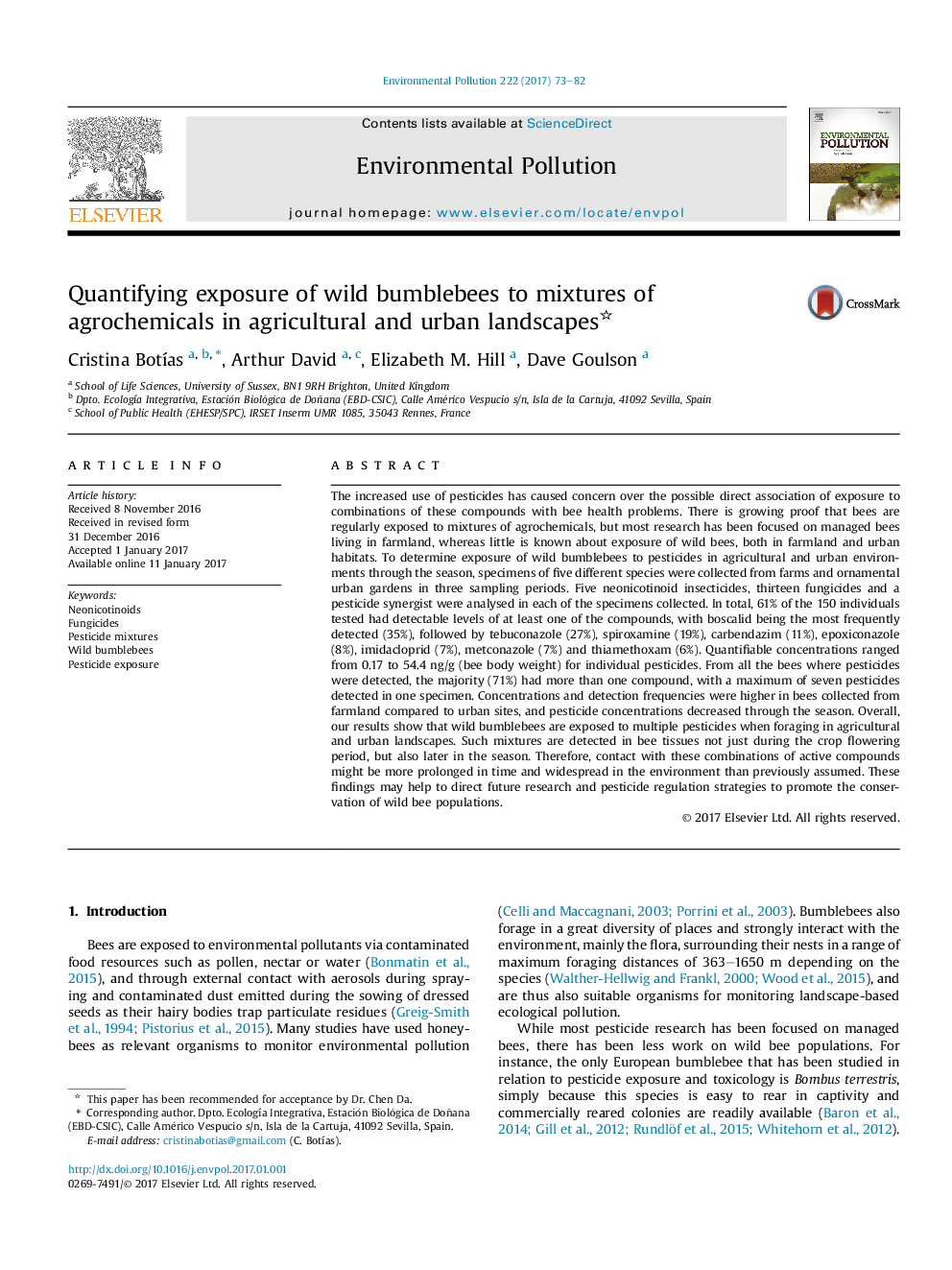| کد مقاله | کد نشریه | سال انتشار | مقاله انگلیسی | نسخه تمام متن |
|---|---|---|---|---|
| 5748996 | 1619151 | 2017 | 10 صفحه PDF | دانلود رایگان |
- Bumblebees are exposed to agrochemical mixtures in agricultural and urban landscapes.
- Exposure to agrochemicals was higher in agricultural compared to urban landscapes.
- Levels detected were higher in spring and early summer and decreased through the season.
The increased use of pesticides has caused concern over the possible direct association of exposure to combinations of these compounds with bee health problems. There is growing proof that bees are regularly exposed to mixtures of agrochemicals, but most research has been focused on managed bees living in farmland, whereas little is known about exposure of wild bees, both in farmland and urban habitats. To determine exposure of wild bumblebees to pesticides in agricultural and urban environments through the season, specimens of five different species were collected from farms and ornamental urban gardens in three sampling periods. Five neonicotinoid insecticides, thirteen fungicides and a pesticide synergist were analysed in each of the specimens collected. In total, 61% of the 150 individuals tested had detectable levels of at least one of the compounds, with boscalid being the most frequently detected (35%), followed by tebuconazole (27%), spiroxamine (19%), carbendazim (11%), epoxiconazole (8%), imidacloprid (7%), metconazole (7%) and thiamethoxam (6%). Quantifiable concentrations ranged from 0.17 to 54.4Â ng/g (bee body weight) for individual pesticides. From all the bees where pesticides were detected, the majority (71%) had more than one compound, with a maximum of seven pesticides detected in one specimen. Concentrations and detection frequencies were higher in bees collected from farmland compared to urban sites, and pesticide concentrations decreased through the season. Overall, our results show that wild bumblebees are exposed to multiple pesticides when foraging in agricultural and urban landscapes. Such mixtures are detected in bee tissues not just during the crop flowering period, but also later in the season. Therefore, contact with these combinations of active compounds might be more prolonged in time and widespread in the environment than previously assumed. These findings may help to direct future research and pesticide regulation strategies to promote the conservation of wild bee populations.
220
Journal: Environmental Pollution - Volume 222, March 2017, Pages 73-82
